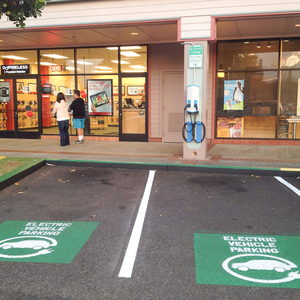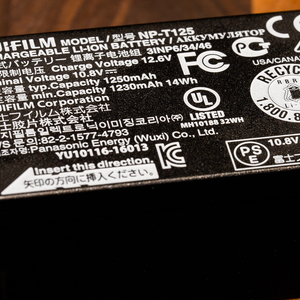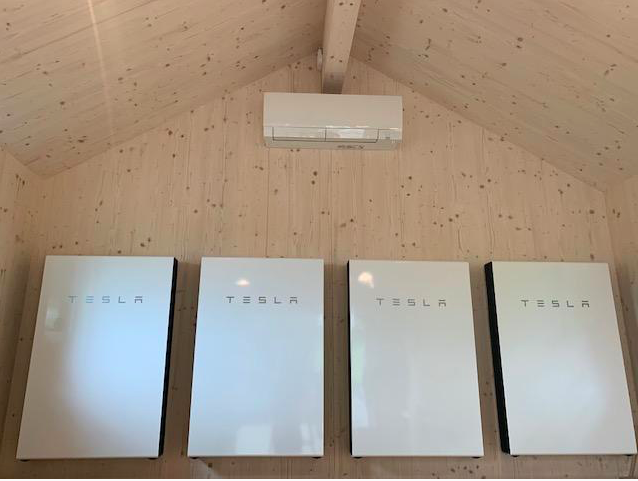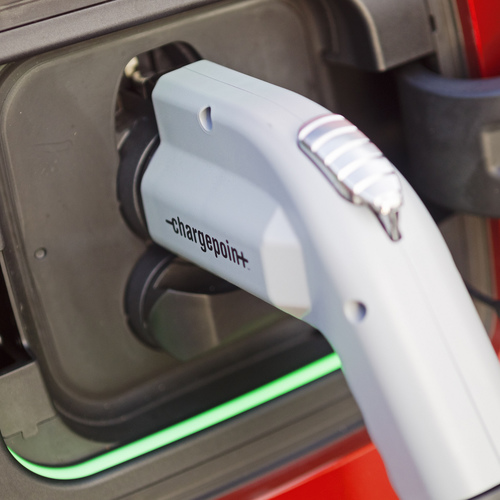
A surge in electric vehicle ownership will help lower carbon emissions in the decades ahead. But it also will create challenges for reusing and recycling millions of lithium ion batteries when the vehicles have reached the end of the line.
A new study published in the journal Nature says the batteries “present a serious waste-management challenge” for recyclers, but also represent an opportunity to recover the valuable raw materials that are used to manufacture them.
Batteries that are no longer capable of powering a vehicle may still have enough juice for streetlights and other less-demanding uses. For backyard tinkerers, batteries may be a less expensive option for power storage than commercially available battery packs like Tesla’s Powerwall.
The study, authored by 14 researchers at the University of Birmingham in the U.K., outlined current approaches to battery recycling and reuse. Although EV sales are modest now, they are growing—in 2017, sales of electric vehicles topped 1 million cars globally for the first time.
With higher sales comes a more pressing environmental problem. With an average battery pack weight of about 550 pounds with a volume of 17.5 cubic feet, those batteries represent about 250,000 tons of waste that must be processed when the vehicles are hauled to the junkyard.
“Although reuse and current recycling processes can divert some of these wastes from landfill, the cumulative burden of electric-vehicle waste is substantial given the growth trajectory of the electric-vehicle market,” the authors said.
Reuse is better than recycling
Batteries can be dismantled to provide raw materials for making new ones. But reuse is a better first option than recycling, according to a waste management theory called “Lansink’s Ladder.” Disposal in a landfill should be the last resort.
Putting old batteries to use for energy storage is appealing in areas where the electric grid is weak or unreliable, and in areas where renewable energy is well developed and the need for storage that much greater.
Or, the batteries can go to people like David Elderton, a British Columbia resident who uses one from a wrecked Tesla Model S to help power his house.
As reported by CBC Radio, giving the old EV battery a second life is part of Elderton’s strategy to replace any motor that burns fossil fuel with one that’s electrically powered. The Tesla battery is charged by solar panels he’s put on the roof of his shed. If he’s careful, the battery is capable of keeping the lights on for as long as five days.
“It’s a good feeling to not be buying gas anymore,” he said.
Used batteries from Nissan Leaf EVs have been used to power streetlights in Japan in a project called “The Light Reborn,” CBC reported. They’ve also been used to light a Dutch stadium. General Motors has used batteries from old Chevy Volts to power a data center at its Milford Proving Ground.
The reuse strategy has limits
Elderton’s power system is built around the battery from a wrecked car, not an old car whose battery has gone through many more charge-discharge cycles. Would the strategy of using old EV batteries for grid storage be as successful with a battery taken from an electric vehicle that has been retired?
Probably not, according to JB Straubel, the former chief technical officer at Tesla. In a 2016 post, CleanTechnica described an interview with Staubel in which he said the idea has been given a lot of attention. Ultimately, he said, “we’ve come to the conclusion that it’s not a very economical or very good use of those assets.”
Why? By the time the battery is pulled out of the car it’s been in service for 10 or 15 years, he said, and the technology is quite old.
“And, you know, the degradation is not entirely linear,” he said. “By the end of their life, the efficiency, the capacity, will have somewhat degraded, and for a lot of reasons, it makes it very difficult to deploy those efficiently back into a grid setting where you want high reliability and do want predictability.”
Batteries specifically designed for grid storage, he said, would have different characteristics than those designed for vehicles. Car batteries aren’t charged and discharged completely every day, where a battery used for home electrical storage might be.
CBC noted that EV batteries should last most drivers between eight and 12 years. Although the batteries degrade over time, they are designed to last the lifetime of the vehicle.
Batteries contain valuable resources
EV batteries contain a variety of valuable resources, including cobalt and lithium. Refining these elements to manufacture batteries has serious environmental implications, so recapturing the ingredients through recycling makes sense from a resource conservation perspective.
For example, the authors of the study in Nature said it takes 250 tons of the mineral ore spodumene to produce one ton of lithium. Using a different method, one ton of lithium requires 750 tons of brine but that process also depletes water tables. (In a major lithium producing region in Chile, 65% of the region’s water is consumed by mining, according to the study.)
Cobalt is a greater problem. Reserves are limited, while price fluctuations and ethical and environmental concerns—including child labor—are rife. “These social burdens are borne by some of the world’s most vulnerable people,” the authors said.
“End-of-life LIB [lithium ion battery] recycling could provide important economic benefits, avoiding the need for new mineral extraction and providing resilience against vulnerable links and supply risks in the LIB supply chain,” the report says.
Still, there are hurdles. Recycling requires someone to take the battery packs apart, which creates its own hazards. Technicians need specialized training and tools, and under certain conditions the batteries can explode or leak hazardous materials. Vehicle manufacturers also use several types of cell design, which makes the process more complicated.
In the U.K., there are only 1,000 trained technicians for EVs, compared with 170,000 who can work on gasoline engines.
“There is concern that untrained mechanics may risk their lives repairing electric vehicles,” the author said, “and these concerns logically extend to those handling vehicles at the end-of-life.”
Instead, the industry is developing robots that can break down batteries and harvest materials for reuse, “potentially making recycling economically viable.”
-Scott Gibson is a contributing writer at Green Building Advisor and Fine Homebuilding magazine.
Weekly Newsletter
Get building science and energy efficiency advice, plus special offers, in your inbox.















19 Comments
As an EV owner, it's not like we didn't know this, but how is LiOn different from the NiMH, NiCD, lead acid, etc. batteries that have been in consumer circulation for decades? Are we just supposed to stop using batteries until there is the "ultimate" clean solution??
I take this as worst of 2 evils when comparing environmental impacts:
a) burn fossil fuel everyday, or
b) cycle through batteries every decade.
Impacting something every decade is very different to daily impact.
What we need are incentives, and/or laws on recycling. My father's generation did not recycle car batteries. Now we recycle lead acid car batteries, other batteries like for consumer electronics, etc. and when you go out to read several studies on this topic, most say that a large majority of lead (and other raw material) is now being recovered.
I'll take a guess that recovery and recycling was NOT really "invented" BEFORE automakers put those lead acid batteries into cars, right? If so, recycling got going, not because my father's generation simply saw a lot of car batteries lying around, but because of incentives to consumers, and some jurisdisctions making dumping of batteries illegal -- hopefully because of the environmental impact. So that's what we need for LiOn in EVs. Not criticism of EVs.
I'll put it simple binary terms: if you object to LiOn batteries, then:
a) stop using your smart phone
b) stop using your laptop / tablet
Because both of those electronics also use LiOn batteries and have a HUGE, global deployment footprint, especially compared to EVs.
The amount of recycled lead in flood lead acid batteries is approx 99 percent because they're fairly simple in their construction and it costs less than buying virgin materials. I imagine AGM batteries aren't much different. I don't know the recovery rate for the Li-Ion, etc. That depends on the battery technology itself but recycled lithium is very expensive relative to virgin stock because the recycling technique depends in part on the manufacturing technique of the lithium battery in question.
Re-purposing of EV batteries is just a delaying tactic until, hopefully, someone can figure out how to economically recycle them. I seem to remember that in Europe the automaker is responsible for the batteries and the automobile owner must pay a recycling fee. There won't be laws in the US for recycling unless you want to continue to price EV's out of the market.
Remember the environmental impact for rare earth mining is largely local whereas fossil fuel emissions have a global impact. Policymakers are ok with that.
>"Re-purposing of EV batteries is just a delaying tactic until, hopefully, someone can figure out how to economically recycle them."
The repurposing of EV batteries as grid storage is more than a mere delaying tactic- it's stacking a very real value on the benefit side of the equation, since it's (generally) cheaper than building purpose made grid batteries. (And that is not just i"...in areas where the electric grid is weak or unreliable...".)
Also the notion that the future of EV batteries is Li ion is not a foregone conclusion- there are many battery chemistries under development, and a breakthrough on cost, safety, energy density etc seems pretty likely by the time EVs become the predominant vehicle type on the road, despite the current head start Li-ion has on the potential competition.
But of course the less valuable the battery chemistry is, the less economic recycling might be. Somehow I think the world is going to be able to keep up though.
While Cobalt is definitely an issue, it is less and less so. Battery chemistries are moving away from using Co, Tesla's batteries are down to ~3% Cobalt vs. the normal 12-14% or so, and have promised to do away with it altogether.
"Car batteries aren’t charged and discharged completely every day, where a battery used for home electrical storage might be."
Someone should tell that to my PHEV. It's a Prius Prime which has a 8.8KWh battery, of which about 6.3KWh is available to use in EV mode. In the summer my round trip commute uses almost 100% of the usable battery capacity. In the winter it uses 1.5-2 times the available capacity (I charge at work). To me this seems like rather demanding use for a battery, so it will be interesting to see how it holds up over time and if it can really last 10+ years.
The SOC is allowed to be between about 14-84%, but I assume any good grid storage device would have similar limits, if it's designed to last a long time.
Toyota just increased the battery warranty across their fleet for the 2020 model year (from 8 years/100k miles to 10 years/150k miles), so they must have high confidence that they will last at least that long.
A lithium ion battery from a Tesla is supposedly very difficult to recycle properly due to the cell complexity of the battery exploding or leaking toxic materials. Looks like solving one problem (reducing ICE emissions) by creating EVs, has created another pollution problem.
Until they figure this out. I will just stick with my gasoline burning vehicle.
>"Looks like solving one problem (reducing ICE emissions) by creating EVs, has created another pollution problem.
Until they figure this out. I will just stick with my gasoline burning vehicle."
Over the lifecycle of a car a fossil burner creates an orders of magnitude larger pollution problem, a problem worth solving even if the EV solution is not perfect.
Just because there hasn't been a sufficient critical volume of EV batteries to have large recycling systems already figured out doesn't mean it's super-difficult or impossible to figure out. As the article point out:
"...batteries “present a serious waste-management challenge” for recyclers, but also represent an opportunity to recover the valuable raw materials that are used to manufacture them."
There is opportunity there.
Recovering and sequestering a gasoline car's lifecycle CO2, PPM2.5 and other emissions economically is an ENORMOUSLY more difficult problem to figure out (which is why it's still a problem.) Even the SOx and NOx emissions aren't fully solved with gasoline cars, despite decades of effort.
Dana,
Financially speaking, for myself. I don't see a benefit to switching to EV. My current ICE can go another 150,000 miles before major repairs might be needed. I know how to work on ICE vehicles so all maintenance can be performed by me. I have no clue on how to work on an EV and would not even attempt to do so.
Nearest Tesla dealership/mechanic is 160 miles away. I require 4WD and towing capabilities. And before you bring up the new Tesla truck (that thing is SO HIDEOUS looking, I would not wish that truck on my worst enemy). Nothing in the current EV market makes financial sense to me. Let alone having to deal with repairs or off-road capabilities.
EVs don't work for everyone right now. Clearly they don't work for you. But they are a good solution for a whole lot of people in urban and suburban areas who probably only occasionally leave a 30 mile radius around their houses. If even 80% of people switched to EVs we'd see a huge improvement in air quality, especially as the amount of renewable electricity generation increases.
You could also consider a two vehicle solution if you do a lot of driving that is just moving people. I have a Prius Prime for my commuting and driving around town, but I kept my Toyota 4runner for hauling building materials, driving off road, going camping, etc. Compared to owning an electric truck or SUV, the value of the two vehicles combined is similar to one new EV SUV, I use less gas overall (since 90% of my driving is in the Prius which is more efficient than an EV SUV), and I have more off road and cargo moving capability when I need it (compared to any current EV SUV offerings).
A PHEV could also a good solution to the battery problem in the article. The battery in mine is big enough for ~80% of my driving (since I can charge at work), but it's around 1/8 the capacity of an average Tesla battery. That will result in a lot less battery waste when the battery is worn out, for a moderately small amount of gas burned over the life of the vehicle.
If someone built a good off-road capable PHEV SUV or pickup I'd strongly consider selling both my vehicles, since it's a bit of a hassle to have two. I think something like a 4runner PHEV or F150 PHEV would work for a lot of people including Peter L, who might not be able to take advantage of a small EV commuter car. Unfortunately the Outlander PHEV is probably the only current option, and it's not that great (bad off road capability and disappointing mileage running on gas). And all the interest for new vehicles is going to full EVs.
Peter,
The reality is the BEV's have ridiculously low maintenance requirements with few moving parts. No valve cover gaskets, no spark plugs/coil packs, no O2/MAF/NOx sensors, no starters, power steering pumps, no oil changes, brakes last significantly longer. Basically due to the reduction of mechanical parts there is a lot less to go wrong. Companies like Tesla don't need to create part failures in order to keep the service department of state-mandated dealer network in business.
Your mileage will vary. Personally I sometimes wish I could own an EV, but I lack the capability to charge at home and I like to road trip. *shrug*
A lot of BEV's households have second cars.
Agreed on both of these comments. I run a Leaf for my long, daily commute. My wife runs a minivan for our kids. We swap back and forth as needed (ie. winter driving, running all the kids, picking up supplies, etc.).
A PHEV would, from a technical POV, been a better match but we went BEV because:
-the grants were considerably higher at the time ($14,000 given for going BEV)
-we figured the change is coming so we might as well adapt now (as the range increases and prices drop, the annoyances we have today will fade).
-there were grants for chargers at the time if you went BEV.
I plug mine into a 220V welder's plug using an adapter. It's portable (Juicebox). Anybody who has an electric stove can charge their car at home. Condos and apartments are where things get a bit dicey if you have a lower range vehicle, but there are solutions to that in the works.
https://electrek.co/2019/11/13/la-adds-hundreds-of-ev-chargers-to-streetlights-giving-renters-a-place-to-plug-in/
John, Do you lack the capability to charge at home because you are off the grid?
>"Financially speaking, for myself. I don't see a benefit to switching to EV. My current ICE can go another 150,000 miles before major repairs might be needed."
Finances are a valid reason for continuing to drive your existing ICE vehicle. But that's different from the reason initially given.
Waiting until "...they figure this out" regarding systems for disposal/recycling EV batteries is not a valid reason.
How many choices benefit us financially AND environmentally??
I don't think most any of these choices in housing or transport have equal benefit (they're usually lopsided), because even those ROI / payback calculations for "green" buildings are very long in the tooth.
We went with PHEV / REV (a Volt ... let's all stop thinking Tesla is the only choice), and have a Jeep to haul things around in the snow. Looks like many others went with an ICE backup vehicle as well.
It's interesting how owning an electric vehicle changes your daily habits and preferences. We here both _prefer_ driving the Volt now :)
Understandable, ... but the economy of converting old solar energy, i.e. fossil fuels, into convenient, cheap new energy is the problem - releasing the massive amounts of CO2 that we can no longer afford. Society can't keep on relying on the cheapest, most familiar form of powering our wants and wishes. We have to do it differently to materially reduce CO2 emissions. That probably means at nominally higher cost, with new and/or unfamiliar technologies, and with perhaps a few challenges still to be met. Recycling materials is not an issue once we get past the hurdle of measuring the viability of everything via the current low economic cost of unsustainably utilizing carbon from cheap fossil fuels. It has to be time we step up and move on.
My profession is nuclear power, and this subject reminds me a lot of the normal debate there. People tell me "what about nuclear waste!" And I say, well, nuclear waste is a problem, but it's a known problem that is manageable and adverse consequences from it almost entirely preventable. Same seems true of LIBs. Piling up battery waste isn't good, but it's hardly catastrophic. Compare that to the consequences of carbon and toxic pollution emissions--enormous consequences (at the macro level) that are unknown and unmanageable (at the individual level).
This is a bit of a side topic to the main idea of this article. I don't think most people understand what a good deal an electric vehicle is just in terms of stored energy. A Tesla Powerwall 2 stores 13.5 kwh of energy and costs around $7000. I estimate the middle range cyber truck will have at least 100kwh of energy storage and the whole truck costs $50,000. You're getting the equivalent of 7 Powerwalls for the price of the truck and then get the truck thrown in as a bonus.
As a comparison I purchased a solar generator that has a miniscule 1.425kwh storage capacity. It is insufficient but keeps the refrigerator and the lights going. That's it. You can get a pretty good idea just how much better it would be in an emergency to use an electric vehicle as a battery in an emergency. You could just get an ICE beater car to get where you needed to go in that emergency an leave the EV parked and hooked up to house electrical circuits.
This is not as far fetched as it might sound. The new Tesla CT will have it's own inverter putting out 220V. Because the inverter won't sync to the grid frequency it can't be connected in parallel with grid power. But you can hook that EV 220 up to one side of a transfer switch, just like people do with gas generator. Flip the switch and your good to go when power goes down.
There is also a side benefit of implementing this plan. With a normal grid tied system alone the PV panels will shut down if they don't see power coming from the grid. I'm thinking microinverters here. But with the Tesla EV spoofing the system by using the transfer switch to give it power rather than the grid the microinverters on a solar PV system will be tricked into supplying power to charge the EV batteries or supply power to the house. So if you have a solar PV system you can get a much simplified backup system. Heck, it might even be enough power from the EV storage to go completely off grid in some locations. And if it doesn't quite do it you can drive to a Supercharger station before it completely runs out and re-up your batteries.
I put down my $100 to reserve the all wheel drive Tesla CT. Yes, it's appearance is growing on me.
Bringing it back to the original topic. If you elect to have batteries for your home it would probably be better to use the batteries in your EV if you could so that you use the same batteries for home and transportation duties -fewer batteries to do the same tasks. There would be less battery manufacturing and less recycling of batteries at the end of life.
A portable battery pack that's compatible with car and home would be nice, yes.
But I'll get back to the post's recycling that undercuts such portable batteries: what about all the other batteries in the world?
If folks have a problem with these batteries, or see no viable recycling options, then stop using:
1) smartphones
2) laptops
3) tablets
4) EVs
5) et cetera, et cetera, et cetera
Log in or create an account to post a comment.
Sign up Log in